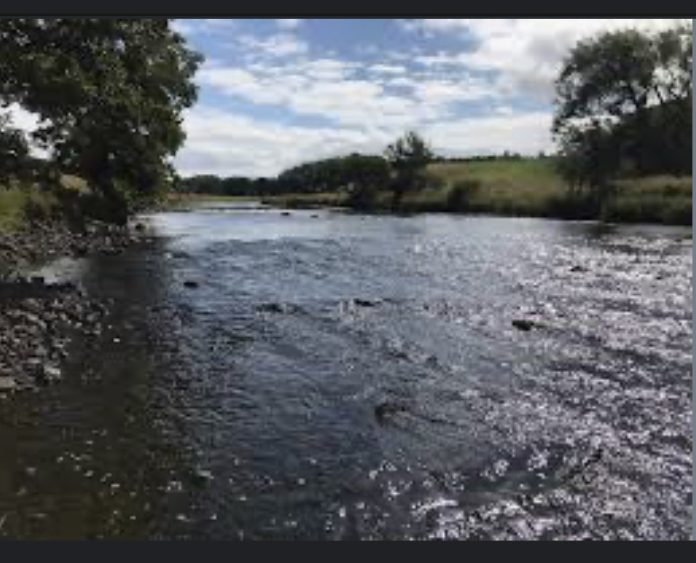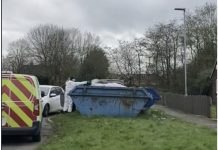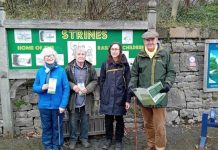Almost 1,200 sewage overflow pipes discharged in England and Wales’ most sensitive wildlife habitats for over 300,000 hours last year, all of which are supposed to be officially protected under conservation rules, Greenpeace’s investigative unit Unearthed can reveal.
This includes 62,366 hours from United Utilities, the worst performing English water company on this measure by a large margin.
Unearthed mapped water company data on sewage spills in 2022 onto maps of England and Wales’ Sites of Special Scientific Interest (SSSIs), Special Area of Conservation (SACs), Special Protected Area (SPAs) and Ramsar sites (wetlands of international importance) to identify every pipe that discharged within 50m of a protected nature site – Defra’s own definition of a “high priority” discharge site.
Examples in the North West include The River Derwent and Bassenthwaite Lake SAC, encompassing parts of Cumbria, including the Lake District, was one of the worst-hit areas, receiving 6673 hours of sewage in 2022.
Morecambe Bay and Duddon SPA received 14,786 hours of sewage. Locals have reported issues with swimming amongst human faeces around the bay on visits to the beach after heavy rainfall. The newspaper Lancs Live reported that people were avoiding swimming in the sea and had described a strong odour coming from the coastline.
Esthwaite Water SSSI, in the Lake District, received 2738 hours of sewage in 2022.
Nationally, the analysis found that 1193 raw sewage overflows discharge within 50m of a protected area and 305,963 hours of raw sewage spilled in protected areas;
The total number of protected areas affected was 515
The River Derwent and Bassenthwaite Lake, a conservation area encompassing parts of the Lake District, was one of the worst-hit areas, receiving more than 6,600 hours of sewage.
It is the constituency of Trudy Harrison, DEFRA Minister for Natural Environment and Land Use.
Chichester and Langstone Harbour, an SPA and Ramsar site, received over 3,200 hours of sewage. A university study found over 50 chemicals and e.coli bacteria at 760 times the EU’s safe levels after sewage releases.
And in addition to the officially protected areas Rivers, lakes and marine areas already in danger from high levels of nutrients from sewage and fertilisers (sensitive to eutrophication) received more than 200,000 hours of sewage.
Unearthed’s investigation found that over 38,000 hours of sewage were released into or within 50m of chalk streams in England last year.
Britain has little unspoilt natural landscape left, and we have lost half of our biodiversity, putting us in the bottom 10% of nations. We do have detailed data on our remaining valuable ecosystems, and they are often officially protected conservation areas, but we are not protecting them.
The government’s current Storm Overflow Reduction Plan, published last summer, outlines a target to ‘improve’ 75% of pipes discharging into high priority areas by 2035, extending to all high priority areas by 2045. For many of these sites, work on spill reduction won’t even begin for over a decade.
Megan Corton Scott, Political Campaigner for Greenpeace UK, said –
“These are the casualty figures from a war which nature is losing, badly. Private water companies treat our countryside as a toilet, and their vandalism doesn’t stop at some of our most sensitive conservation areas. Beloved lakes, beaches and rivers, rare wildlife habitats, sites of special scientific interest are being sacrificed so water company bosses and shareholders can continue to reap huge profits. The idea that the sewage industry could be shamed into doing the right thing has been tried and failed – nothing matters to them except profit. The only way to force them to clear up their mess is to make all of their dividends and bonuses dependent on actual results. Instead of long-term targets and empty threats, ministers should actually force the water companies to do the job we pay them for, starting now.”
Studies have found that sewage being released into natural ecosystems elevates concentrations of nutrients, pathogens, endocrine disruptors, heavy metals, pharmaceuticals, recreational drugs and pesticides in the environment.
Aside from the chemical content, the release of sewage into slow-moving water can promote blooms of toxic blue green algae that can kill fish and aquatic plants, and animals that swim in the water or drink it, and can cause severe illnesses in humans. “Harmful algal blooms” like these have been spotted in lakes including the Lake District’s Lake Windermere and Derwentwater, and symptoms seen include rashes, eye irritation, vomiting, diarrhoea, fevers and joint pain.







